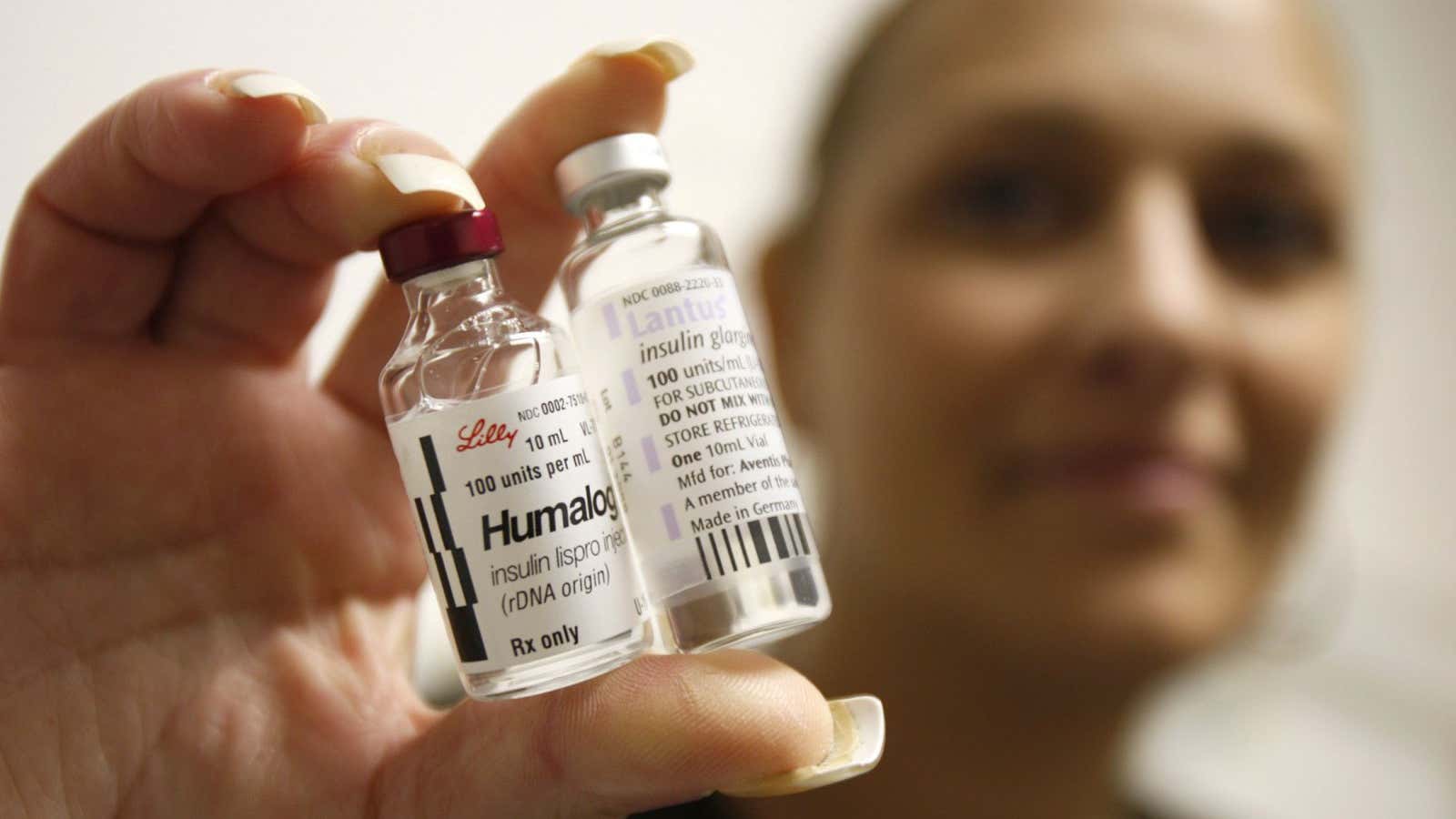Greg Glassman, the founder and CEO of CrossFit—a global fitness brand with thousands of its own gyms, special workout plans, and loyal evangelists—was recently quoted on his company’s official Twitter account, making fun of global beverage giant Coca-Cola: ”‘Make sure you pour some out for your dead homies.’—Greg Glassman.”
The tweet features a doctored illustration of a trademarked Coke ad, with “open happiness” replaced by “open diabetes.”
Very funny, Glassman. Wonder if the Coca-Cola employee who competed in your CrossFit games last year will be coming back.
But no wonder the singer Nick Jonas, who has Type 1 diabetes, an autoimmune disease that is most definitely not caused by drinking soda, took offense.
Other people in the uniquely active online diabetes community chimed in with outrage.
As a journalist, I’m not a big fan of the Twitter outrage that wiggles its way into so many news headlines these days. But as a person with Type 1 diabetes, I am 100% on board with the dismay expressed by Jonas and numerous others regarding Glassman’s cavalier punchline.
We’ve all heard some variation of Glassman’s statement before. After all, Coke and other sugary sodas have been proven hazardous to health. The more Coke the world drinks, the higher the world’s rates of obesity get. Many soda opponents and health advocates aren’t content to simply say that sugar causes “obesity,” though. They strengthen their rhetoric by mentioning obesity-related illnesses, such as diabetes. And whether it’s Michelle Obama speaking sincerely on a podium or a middle-school kid laughing with his peers, the idea is the same: If you eat too much sugar, you will get diabetes.
Unfortunately for the policy-makers and the jokesters, there are different types of diabetes. For people who know the difference, and especially those who suffer from the most serious form of the disease, both earnest arguments and innocent jokes tend to fall flat.
Type 1 diabetes is not preventable at all, as far as doctors know. Type 2 diabetes is preventable, though some people are pre-disposed to it through no fault of their own, and being overweight or obese increases your risk of getting it.
To think of either type of diabetes as something caused by sugar or something that can be treated with a sugar-free lifestyle is a gross oversimplification. That’s the way people thought about diabetes in the early 1900s, before the discovery of insulin. Medical professionals know better now. If you want to talk about health or fitness, you should know better, too.
In an ideal world, Type 1 diabetes and Type 2 diabetes would have completely different names, because they’re caused by different mechanisms and they have very different impacts on quality of life. I used to avoid saying that one kind is “worse” than the other—I was taught that there’s no such thing, and that it’s not politically correct to label illnesses as “good” or “bad.” The proper response, when someone asks me if I have “the bad kind” of diabetes, is: There’s no good and bad, there’s just Type 1 and Type 2.
But I’ll say it now: Type 1 diabetes is the worst kind. It strikes 8-month-old babies and 21-year-old college athletes, people of every race, every social class, and every size. It is irreversible and immediately life-threatening. People with Type 1 diabetes are only able to live by carrying vials of insulin everywhere they go. A small proportion of Type 2s and people with gestational diabetes take insulin, too, though some of them rely on it only temporarily.
Insulin is a very scary thing to mess with. Since all Type 1s give themselves multiple doses of insulin a day for every day of their lives, there is plenty of room for error—and a lot of Type 1s live in fear that one day, one of these errors will be deadly.
We’re constantly trying to balance the sugar in our blood with the insulin in our blood, and it’s surprisingly easy to end up with too much insulin and not enough sugar. That’s how a healthy person with Type 1 can die in less than an hour. To prevent that kind of calamity, we always carry sugary snacks with us in addition to our insulin.
On more than one occasion, it’s been a 12-ounce can of Coke that saved me from a low blood sugar emergency.
